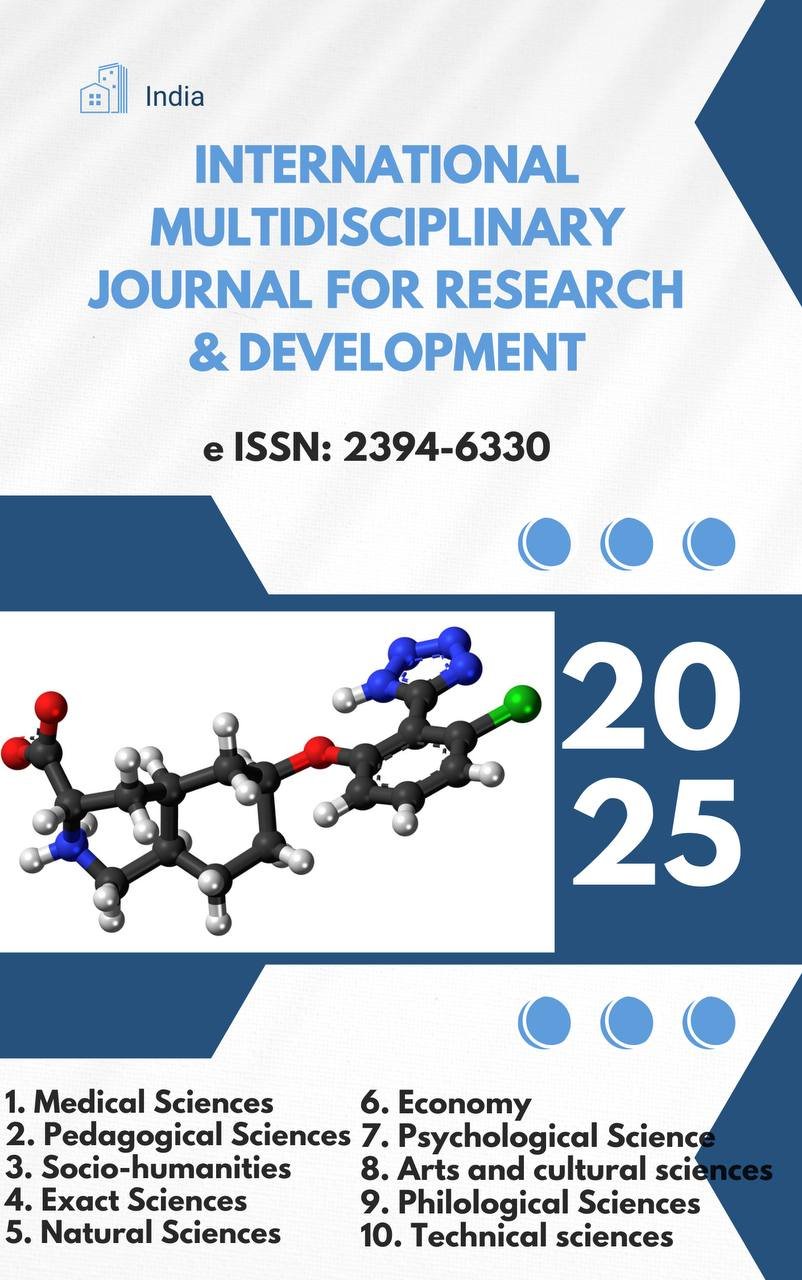STAGES, FORMS, AND METHODS OF IMPROVING INTERCULTURAL COMMUNICATIVE COMPETENCE

Abstract
Intercultural communicative competence (ICC) has become a fundamental skill in today's globalized society. This article examines the stages of ICC development, various forms it can take, and effective methods for its enhancement. By analyzing current pedagogical practices and theoretical frameworks, we offer insights into how learners and educators can systematically cultivate intercultural awareness, attitudes, and communication skills.
Keywords
intercultural competence, communicative competence, intercultural education, language learning, cultural awareness, teaching methods
References
- Byram, M. (1997). Teaching and Assessing Intercultural Communicative Competence. Multilingual Matters.
- Bennett, M. J. (1993). Towards Ethnorelativism: A Developmental Model of Intercultural Sensitivity. In R. M. Paige (Ed.), Education for the Intercultural Experience (pp. 21–71). Intercultural Press.
- Uktamovna, B. G. (2024). Sportning Inson Hayot Tarziga Ta’sir Effektlari. Miasto Przyszłości, 55, 541-543.
- Furqat o’g’li, E. S., & Shuxrat o’g’li, M. S. (2025). O’ZBEKISTON SPORTCHILARINING SPORT SOHASIDA ERISHGAN YUTUQLARI. Лучшие интеллектуальные исследования, 39(1), 127-131.
- Gofurova, G. (2025). SIMPLIFYING MEDICAL INFORMATION FOR THE GENERAL PUBLIC. International Journal of Artificial Intelligence, 1(2), 1789-1791.
- Tukhtaeva, K. (2023). Formation of Lexical Combinations in Media Texts. Finland International Scientific Journal of Education.
- Xamdamovna, I. M. (2022). Stylistic features of the use of asindetone in languages of different systems. INTERNATIONAL JOURNAL OF SOCIAL SCIENCE & INTERDISCIPLINARY RESEARCH ISSN: 2277-3630 Impact factor: 8.036, 11, 30-33.
- Ibrakhimovna, K. G. (2024). GAMES AS AN EFFECTIVE WAY OF DEVELOPING YOUNG LEARNERS’COMMUNICATIVE SKILLS. International Journal of Pedagogics, 4(03), 97-104.
- Муминова, Н. А. (2016). Эстетическое воспитание студентов посредством народного искусства. Образование и воспитание, (4), 6-7.
- Хакимов, М. Ш., Маткулиев, У. И., Ашуров, Ш. Э., & Кодирова, Г. Р. (2022). Новый взгляд на оценку тяжести кровотечения из варикозно расширенных вен пищевода (Doctoral dissertation, Узбекистан).
- Yuldasheva, D. (2022). Communicative approach in teaching a foreign. UIF-2022, 8.
- Гафуров, Б. З. (2021). АНАЛИЗ ЛИНГВОСТАТИСТИЧЕСКОЙ ХАРАКТЕРИСТИКИ АКЦЕНТНЫХ ФОНОВАРИАНТОВ ИМЕН СУЩЕСТВИТЕЛЬНЫХ РУССКОГО ЯЗЫКА. МЕЖДУНАРОДНЫЙ ЖУРНАЛ ИСКУССТВО СЛОВА, 4(1-1).
- Гафуров, Б. З. (2009). Роль сокращения фонемного состава слова в образовании сегментных фоновариантов существительных русского, узбекского и английского языков. Современные гуманитарные исследования, (6), 124-126.
- Tursunovich, S. E. (2021). Speech acts of refusals: Challenging the challenges. ACADEMICIA: An International Multidisciplinary Research Journal, 11(10), 2063-2067.
- Sadikov, E. T. (2021). Teaching pragmatic skills and abilities through activities. ISJ Theoretical & Applied Science, 11(103), 1139-1141.
- Tursunovich, S. E. (2022). Student engagement activities for captivating a classroom in teaching interactive and pragmatic skills. Integration of Pragmalinguistics, Functional Translation Studies and Language Teaching Processes, 104-106.
- Deardorff, D. K. (2006). The Identification and Assessment of Intercultural Competence as a Student Outcome of Internationalization. Journal of Studies in International Education, 10(3), 241–266.
Downloads
Download data is not yet available.